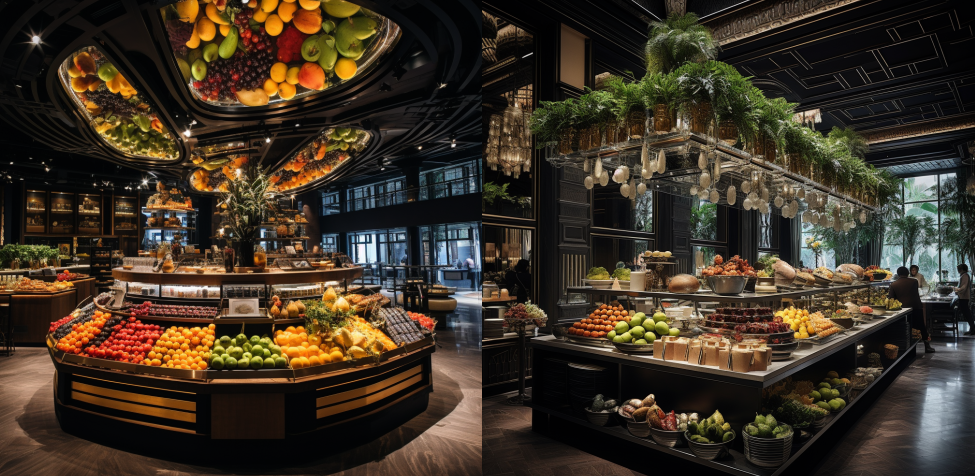Consumer preferences, nutritional considerations and flavour trends play pivotal roles in shaping the trajectory of the food and beverage industry. For companies focused on consumer packaged goods (CPG), success lies not only in crafting delicious products but also in understanding and adapting to the changing demands of the market. In this article, we will delve into the intricacies of the food and beverage market, exploring flavour trends, nutritional considerations and how CPG companies can cater to evolving consumer preferences, including the emerging trend of budget-conscious choices in the ambient market.
Flavour Trends: A Gastronomic Journey
Flavour trends in the food and beverage industry are akin to a gastronomic journey, influenced by cultural shifts, global events and an expanding culinary landscape. Staying attuned to these trends is essential for CPG companies to remain relevant and appeal to the discerning tastes of consumers.
- Global Fusion: Consumers today crave diverse and globally inspired flavours. Examples include the growing popularity of Korean BBQ-flavoured snacks, Middle Eastern-inspired condiments like tahini-flavoured dressings and fusion dishes such as sushi burritos that blend the best of multiple cuisines. We predict that Asian flavours will take the spotlight for 2024 - read our article here. CPG companies can leverage this trend by incorporating authentic global flavours into their products, offering consumers a passport to culinary exploration.
- Plant-Based Paradigm: The rise of plant-based diets is a transformative force in the food and beverage market. Examples range from plant-based burgers, such as the Beyond Burger, and sausages like the Impossible Sausage, to dairy-free ice cream brands like Oatly and plant milk alternatives, including almond and oat milk options from brands like Alpro and Oatly. CPG companies should innovate by introducing plant-based options that not only mimic the taste of traditional favourites but also meet nutritional expectations.
- Functional Flavours: Beyond mere taste, consumers are seeking functional benefits from their food and beverages. Examples include beverages infused with adaptogens for stress relief, such as kombucha with added ashwagandha, snacks incorporating superfoods for added nutrition, like kale chips or quinoa-based snacks, and herbal teas with botanical extracts for health benefits. Brands like GT's Living Foods and Nature's Path are incorporating functional ingredients into their products. CPG companies can align their products with this trend by incorporating functional ingredients that not only enhance flavour but also contribute to overall well-being.
- Ambient Market: A New Frontier for Budget-Conscious Consumers. In light of the ongoing cost of living crisis and the increasing need for budgeting, the ambient market is witnessing a surge in popularity. Ambient products, which have a longer shelf life and do not require refrigeration, offer an affordable and convenient alternative for consumers looking to stretch their grocery budget. CPG companies can tap into this trend by developing innovative ambient products that maintain both affordability and high-quality standards, meeting the changing needs of budget-conscious consumers.
Nutritional Considerations: Balancing Health and Flavour
In an era where health-conscious consumers scrutinise product labels, nutritional considerations play a pivotal role in the success of food and beverage offerings. Striking the right balance between flavour and nutrition is a delicate art that requires innovation and a deep understanding of changing dietary preferences.
- Clean Label Movement: Consumers are increasingly gravitating towards products with transparent and simple ingredient lists. Examples include snacks with minimal ingredients, such as Bare Snacks apple chips, beverages without artificial additives like Harmless Harvest coconut water and condiments with recognisable components, such as Sir Kensington. The clean label movement emphasises the use of recognisable, minimally processed ingredients. CPG companies should prioritise ingredient transparency and avoid artificial additives to align with this consumer demand for cleaner, healthier options.
- Mindful Indulgence: While health remains a priority, consumers still seek indulgent experiences. Examples of mindful indulgence include snacks with reduced sugar formulations, such as Kind Bars with lower sugar content, desserts with alternative sweeteners like Lakanto monk fruit sweetener, and portion-controlled options like Halo Top ice cream. CPG companies can navigate this paradox by developing products that offer guilt-free indulgence.
- Personalised Nutrition: The one-size-fits-all approach to nutrition is evolving into a more personalised model. Examples of personalised nutrition initiatives include customisable meal kits from HelloFresh, snacks tailored to specific dietary needs, such as Paleo or Keto-friendly options, and apps that provide individualised nutrition recommendations, like MyFitnessPal. CPG companies can leverage technology and data analytics to understand individual consumer preferences and tailor their offerings accordingly.
Adapting to Changing Consumer Preferences
Consumer preferences in the food and beverage market are constantly changing, influenced by factors such as lifestyle changes, cultural shifts and health awareness. CPG companies must be agile and responsive to these changes to maintain a competitive edge.
- Sustainability Matters: As environmental concerns continue to gain prominence, consumers are increasingly seeking sustainable and eco-friendly options. Examples of sustainable practices include using eco-friendly packaging, such as that employed by brands like Ecover, sourcing ingredients ethically like Fair Trade products, and implementing energy-efficient production processes. CPG companies can adopt sustainable practices to align with consumer values and contribute to a greener future.
- E-Commerce Explosion: The growth of e-commerce has transformed the way consumers discover and purchase food and beverages. Examples of successful e-commerce strategies include optimising online platforms, offering exclusive online promotions and engaging consumers through social media. CPG companies should optimise their online presence, ensuring a seamless and engaging digital experience for consumers.
- Storytelling and Brand Narrative: Beyond the product itself, consumers are drawn to brands with compelling narratives. Examples of effective storytelling include highlighting the journey of sourcing ingredients, showcasing the brand's commitment to sustainability and sharing the stories behind product development. CPG companies can connect with consumers by sharing these narratives, fostering brand loyalty in an increasingly competitive market.
Sonder Capital Limited, headquartered in London, is your strategic partner in the hospitality, leisure, retail, consumer and luxury goods sectors. With a commitment to excellence and innovation, we offer customised business strategies, comprehensive financial advisory services and harness cutting-edge technology to empower your success. Partner with us to unlock your business's full potential.

